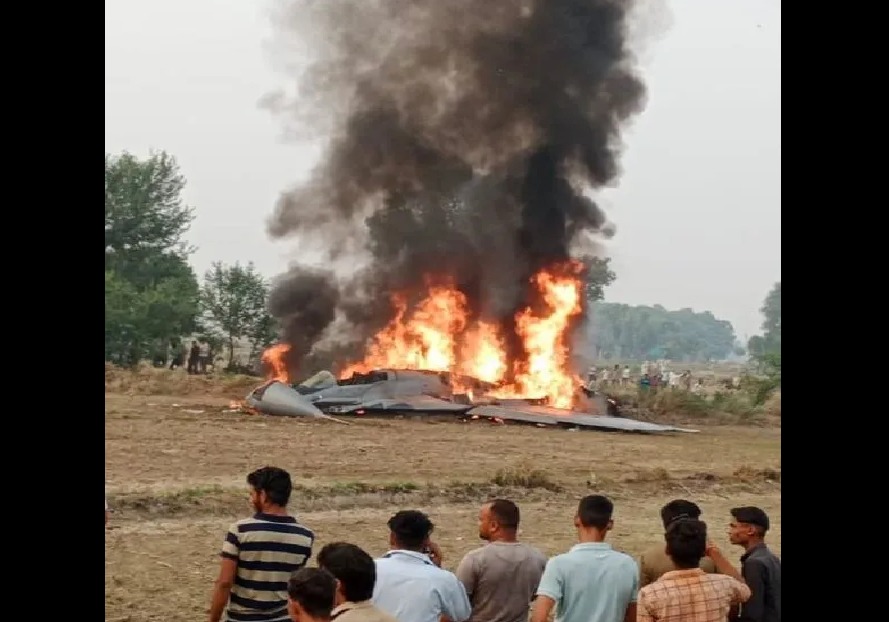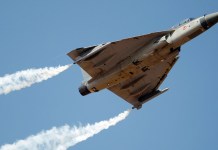On July 9, a SEPECAT Jaguar aircraft of the Indian Air Force (IAF) crashed near Churu in Rajasthan, killing two pilots. This was the third Jaguar accident this year, and overall, IAF’s fifth peacetime crash in 2025.
A Jaguar fighter jet was lost in March, and another in April. Tragically, even during the April crash, one IAF pilot had lost his life.
Additionally, India has lost an Antonov An-32 and a Mirage 2000 this year, bringing the total number of IAF aircraft lost in the last six months to five. Three young IAF pilots have been killed in these crashes.
These numbers may seem shocking, and indeed, they are. We are talking about the world’s fourth-largest economy and a country that is also ranked as the world’s fourth most powerful nation, with the world’s fourth-largest Air Force.
However, India is also known as the land of contradictions. And here is another one: a contradiction which is not only ironic, but equally tragic.
From India’s perspective, these numbers are not an exception, but the norm.
India also lost eight aircraft in 2024, another eight in 2023, five in 2022, 11 in 2021, and five in 2020, all of them during routine peacetime missions.
Since 2020, India has lost 42 aircraft, losing more than seven aircraft every year.
Between 2015 and 2024, India lost a total of 104 aircraft in one decade, or nearly six squadrons.
The IAF currently has a fighter squadron strength of 31, as against the sanctioned strength of 42. The IAF is short of 11 fighter squadrons.
However, India has lost aircraft equivalent to 14 squadrons (255 aircraft) during the last two decades. Apart from the expensive aircraft, the IAF has also lost priceless pilots during these crashes.

The Loss Of Pilots
Between 2012 and 2021, India lost 73 IAF pilots in various crashes, averaging more than seven pilots every year. The figures for previous decades are even more shocking.
For instance, India lost 122 IAF pilots between 2002 and 2011, and a further 190 IAF pilots between 1992 and 2001.
In the decade before that (1982-1991), India lost a staggering 230 pilots, the highest figure in any decade since independence (not counting the decade between 1962-1971, when India fought three wars – 1962, 1965, and 1971 – and lost 333 IAF pilots.
According to a study by defense analyst Colonel Ajai Shukla (Retd.), between 1952 and 2021, India lost 1,305 pilots over the seven decades, an overwhelming majority of whom died during non-combat missions.
More Losses In Non-Combat Missions
According to Bharat Rakshak, a privately run digital platform that has meticulously compiled data on all IAF losses, between 1948 and 2025, the IAF has lost a total of 1,804 aircraft (excluding helicopters), with the vast majority of these losses occurring during non-combat missions.
According to one analysis, of the 1,804 aircraft lost, only about 143 aircraft were lost during combat missions. This means that the IAF has lost only one in 12 aircraft during combat missions, and the remaining 11 during peacetime missions.
Put another way, the IAF has lost 92 squadrons during non-combat missions. True, not all of these aircraft that were lost were fighter jets. However, even if one only counts the fighter jets lost during non-combat missions, the IAF has still lost more than 50 squadrons.
In fact, India might be the country that has recorded the highest number of peacetime aircraft crashes anywhere in the world. However, it must be noted that countries like China and Russia (the Soviet Union before 1991), two large countries with extensive Air Force inventories and a fleet of many old aircraft, are not known to release their aircraft accident numbers in a transparent manner.
The Elephant In The Room – MiG-21
When it comes to fighter jet crashes in India, no other aircraft is as infamous as the MiG-21. The notoriously fast, difficult-to-control, and compact fighter jet has earned the monikers of “Flying Coffins” and “Widow Makers.”
But does the data support their bad reputation?
As the saying goes, there is smoke, only when there is fire. The data for the last seven decades does support the MiG-21’s bad reputation.

In 2012, India’s former Defence Minister, AK Antony, informed Parliament that over half of the MiG aircraft purchased by India had been lost in crashes. Specifically, out of the 872 MiG aircraft procured, 482 had crashed, resulting in the loss of 171 pilots, 39 civilians, and eight personnel from other services.
Of these, as many as 298 were MiG-21, 54 were MiG-23, 4 were MiG-25, 59 were MiG-27, and 25 were MiG-29.
According to Bharat Rakshak, in the fighter jets category, nearly 25% of the combat jets lost by the IAF were MiG-21s, followed by the Hunter F56 (10.2%), Vampire FB52 (8.9%), Tempest II (8%), Gnat (7.6%), MiG 27 (5%), and Jaguar (4.9%).
In the transport aircraft category, India lost the highest number of Dakota C-47 (41.5%), followed by Antonov AN-32 (11.6%).
The Cause
The facts speak for themselves. The IAF has a high attrition rate by any standards.
An audit report, entitled “Aircraft Accidents in the Indian Air Force, 2002,” by the Public Account Committee concluded that the IAF’s accident rate per 10,000 hours of flying ranged “between 0.89 and 1.52 during the period 1991-97”; for fighters it “ranged between 1.89 and 3.53”; while for MIG-21 variants it “ranged between 2.29 and 3.99”.
In comparison, fighter aircraft accident rates in the US Air Force were 0.29 in the 1990s, 0.15 in the 2000s, and 0.1 between 2010 and 2018.
A Parliamentary debate from 1982 was particularly revealing. It disclosed that India lost nearly as many aircraft during the previous two years as the IAF has lost in the 1971 war with Pakistan.
It is easy to blame the outdated fighter aircraft. And that certainly is a major part of the problem. The MiG-21s and Jaguars comprise a big portion of crashed fighter jets. These vintage jets should have been retired a long time ago.
Countries like Britain and France have retired their Jaguars many years ago. Even small countries like Ecuador, Oman, and Nigeria have phased them out. However, India is still flying over 100 of these vintage aircraft.
Similarly, the IAF is still flying the MiG-21s after more than five decades of service. The IAF is set to retire its remaining 26-28 MiG-21 Bison fleet by the year-end.
As India retires these vintage aircraft, the accident rate of the IAF is set to come down. However, as stated earlier, this is only part of the problem. Human errors, the lack of advanced trainers, and technical faults are other significant causes of IAF crashes.
The IAF has also lost 13 Su-30s, 15 Mirage-2000s, 59 MiG-27s, and 25 MiG-29s; these aircraft are not very old or outdated. Some media reports claim that India has lost 12 (not 13) Su-30 MKIs; however, upon further investigation, it was found that India has lost 13 Su-30s to date.
Still, the IAF’s crash rate has been decreasing, and as India replaces its single-engine Soviet-era fighters with mostly twin-engine Western fighters, the IAF’s crash rate is expected to decline further.
Similarly, India has invested in advanced trainers, such as the Pilatus PC-7 Mark II and HAL’s HTT-40.
However, despite these investments, the IAF’s accident rate is declining at a slow and unsatisfactory pace. Such a high number of aircraft accidents and pilot deaths should be unacceptable in India in 2025.
- Sumit Ahlawat has over a decade of experience in news media. He has worked with Press Trust of India, Times Now, Zee News, Economic Times, and Microsoft News. He holds a Master’s Degree in International Media and Modern History from the University of Sheffield, UK.
- VIEWS PERSONAL OF THE AUTHOR.
- He can be reached at ahlawat.sumit85 (at) gmail.com




